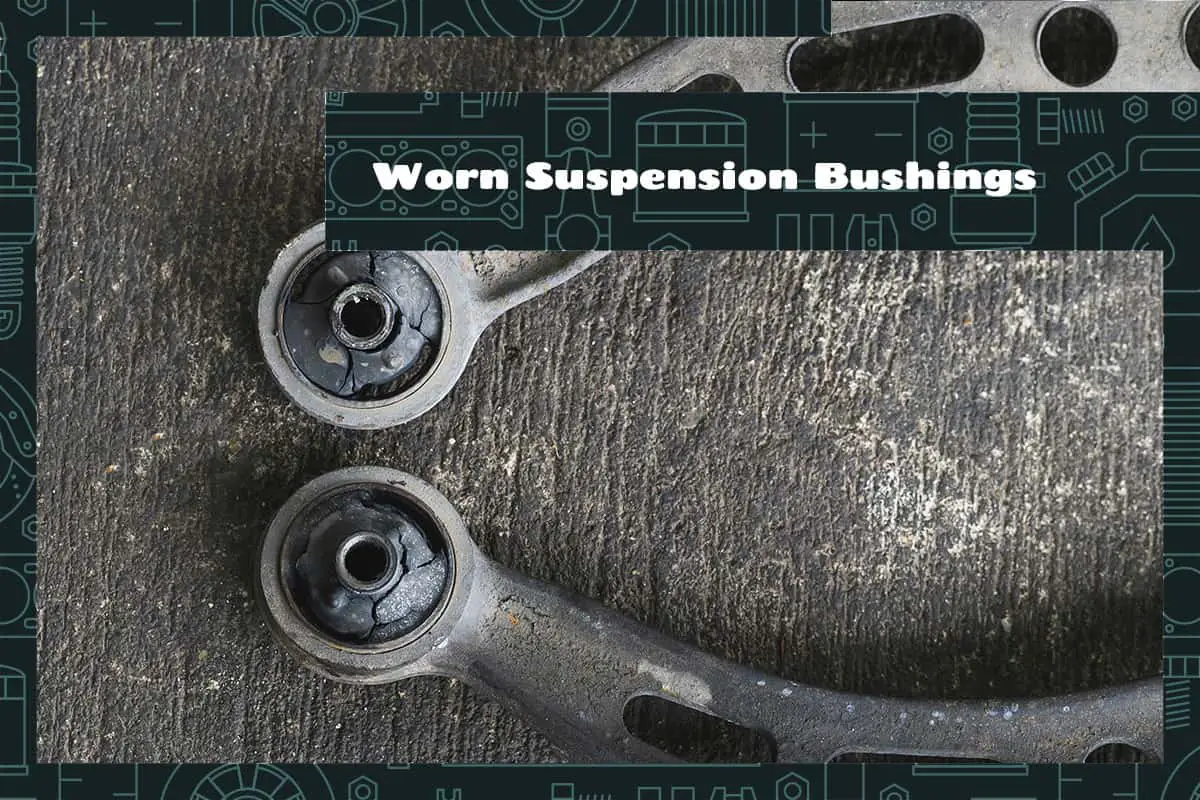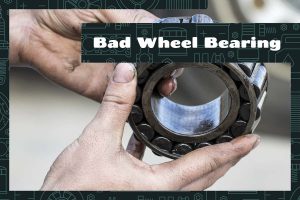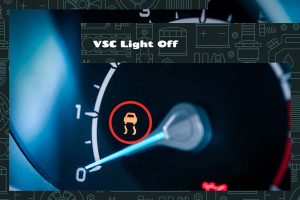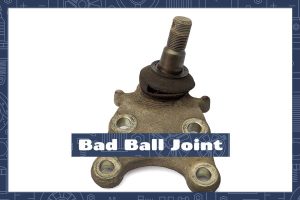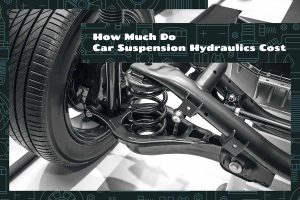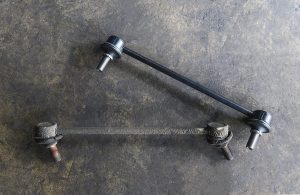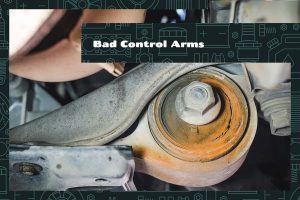Suspension bushings may seem like small, inconsequential parts of your car, but they play a critical role in ensuring a smooth and comfortable ride. These little rubber components, nested into your vehicle’s suspension system, absorb shocks from road bumps and help prevent metal-on-metal wear. However, bushings can wear out over time and impact your driving experience negatively.
Telltale signs of worn suspension bushings include:
- Unusual rattling or clunking noises, especially over bumps
- Difficult steering or car pulling to one side
- Excessive vibration or shuddering while driving
- Uneven tire wear indicating alignment issues
In this guide, we will take a closer look at the details of worn suspension bushings—how to identify them, what causes the wear, and how to deal with them.
What are Suspension Bushings?
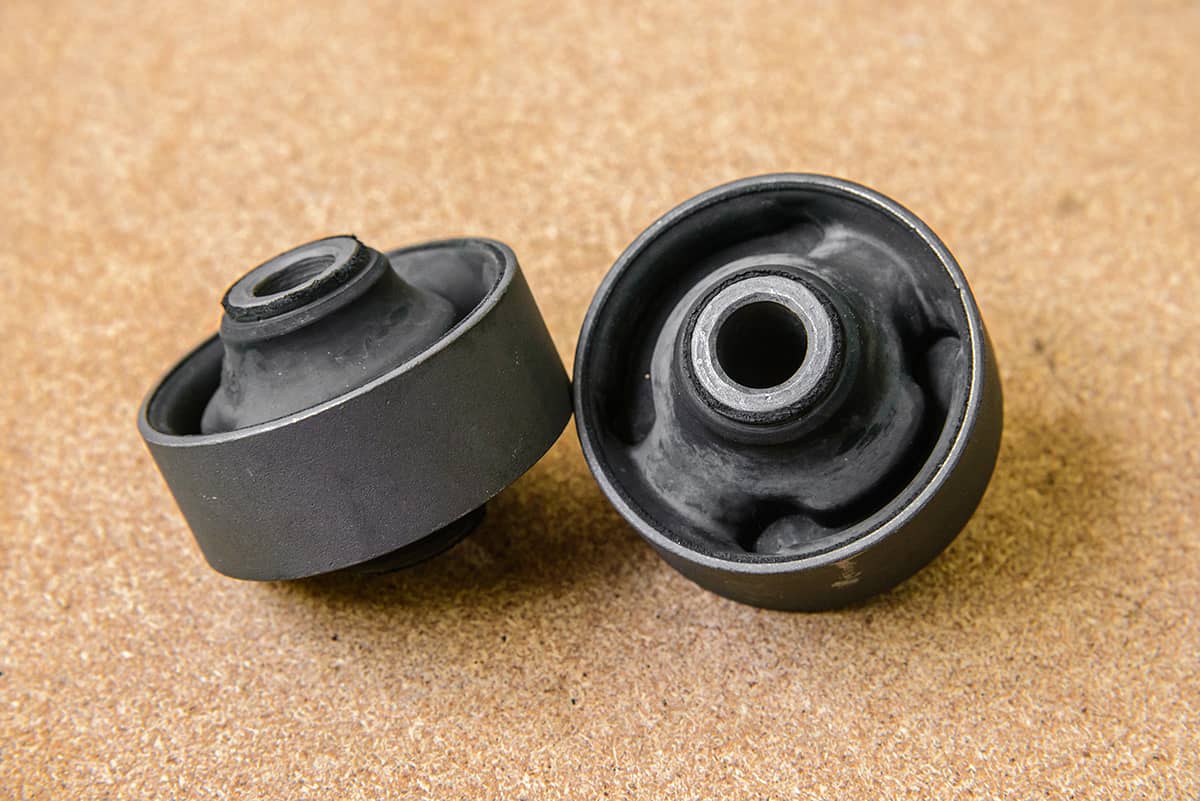
Suspension bushings are essentially rubber pads that absorb impacts, reduce vibration, and prevent metal components within the suspension system from rubbing together. They’re housed within a car’s control arms, sway bars, shock absorbers, and other suspension components, helping maintain the vehicle’s alignment while it navigates different road conditions.
Rubber bushings are the most common type, prized for their cost-effectiveness and ability to absorb a wide range of vibrations. However, polyurethane and polygraphite bushings are becoming increasingly popular for their enhanced durability and stiffness, making them suitable for performance or heavy-duty vehicles.
Role and Functionality of Suspension Bushings
The main role of suspension bushings is to control the car’s movement, absorb shocks, reduce noise, and prevent premature wear of the suspension components. When your vehicle navigates bumps, potholes, or rough terrain, the suspension bushings help absorb the resulting shocks. This makes your ride smoother and quieter by reducing the vibrations transmitted to the vehicle’s chassis.
Moreover, they maintain alignment in the steering and suspension system, ensuring the wheels stay connected with the road for better handling and safety. By preventing metal-on-metal contact, suspension bushings extend the lifespan of the suspension components, which can save you from costly repairs down the line.
In performance or heavy-duty vehicles, upgraded bushings can enhance handling and responsiveness. While stiffer polyurethane or polygraphite bushings might transmit more road feel, they can provide more precise control and longevity, particularly under high-stress conditions.
Signs of Worn Suspension Bushings
Here, we’ll detail the common symptoms that indicate your car’s bushings may need attention.
1. Clunks and Rattles
Perhaps the most noticeable signs of worn suspension bushings is the presence of unusual noises from your car’s undercarriage. You might hear clunks, rattles, or squeaking sounds, especially when driving over bumps, potholes, or uneven surfaces. These noises occur because the worn-out bushings can’t absorb vibrations as effectively, allowing metal components to knock against each other.
2. Steering and Handling Issues
You might notice the vehicle pulling to one side or the steering feeling looser or less responsive than usual. In extreme cases, the steering wheel might even vibrate. These symptoms are a result of the suspension components moving more freely than they should due to the worn bushings, affecting the car’s alignment and overall handling.
3. Uneven Tire Wear
Since bushings help maintain your car’s alignment, worn bushings can lead to improper alignment, causing your tires to wear unevenly. Remember, uneven tire wear can affect your car’s safety and performance and shorten the lifespan of your tires.
4. Excessive Vehicle Roll
When your car’s bushings are in good shape, they help keep the vehicle stable during turns. If you start noticing excessive body roll (leaning) when you’re cornering or sharp dips when braking, it could mean your bushings are worn. This happens because the bushings can no longer effectively absorb the lateral forces during a turn or the forward momentum during a stop, causing the car to feel less stable.
Causes of Suspension Bushing Wear and Tear
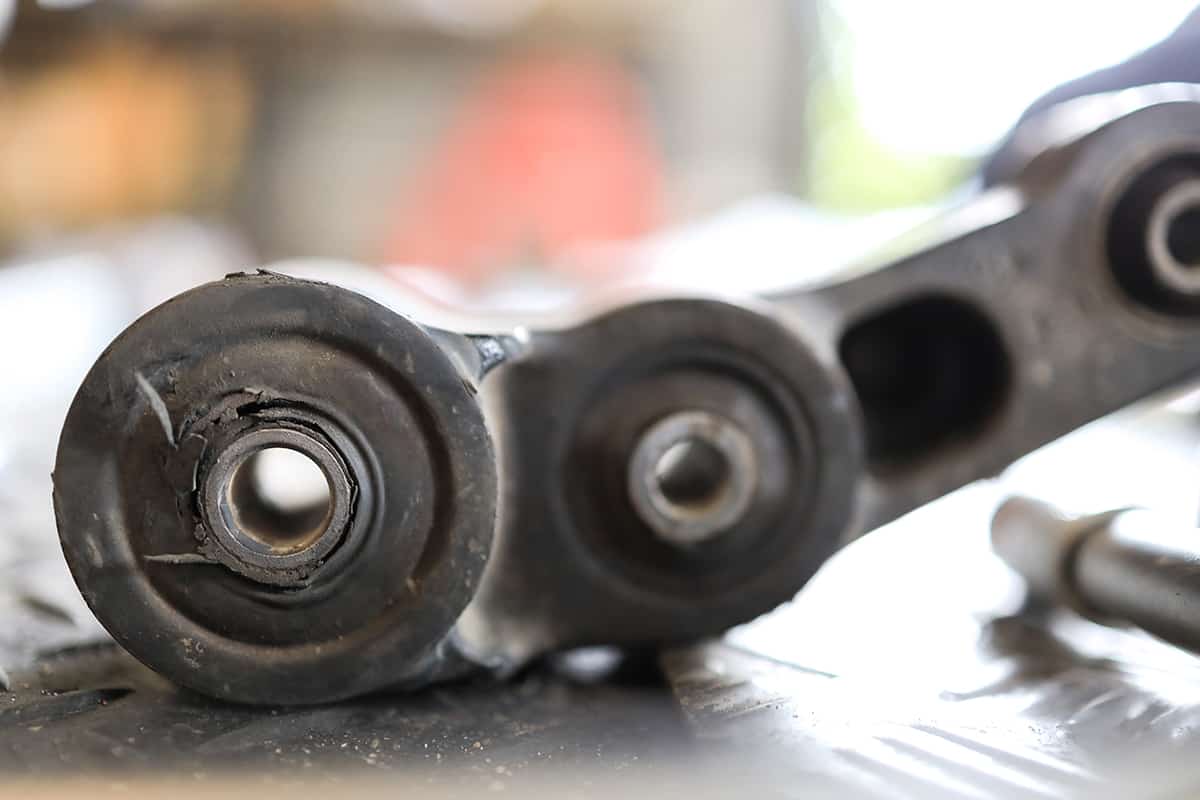
Several factors contribute to this deterioration, from regular usage to specific driving conditions. Here are some key causes of bushing wear.
1. Regular Wear and Tear
The constant pressure, vibrations, and shocks they absorb from the road gradually cause the bushing material to degrade. Depending on your driving habits and the type of bushings your vehicle uses, this degradation can happen faster or slower.
2. Harsh Driving Conditions
The type of roads you frequently travel on and your driving habits significantly impact your suspension bushings’ lifespan. Driving frequently on rough, uneven roads, over speed bumps, or through potholes puts more stress on the bushings, leading to accelerated wear. Additionally, aggressive driving styles, such as fast cornering and harsh braking, can put extra strain on the bushings, causing them to wear down more quickly.
3. Improper Maintenance
This includes not regularly inspecting the suspension system, ignoring signs of bushing wear, or failing to replace worn bushings promptly. Lack of lubrication can also lead to bushing wear. Some bushings require periodic lubrication to minimize friction and ensure smooth operation, so neglecting this can shorten their lifespan.
4. Environmental Factors
Exposure to harsh weather conditions, road salt, oil, and other chemicals can degrade the bushing material over time. Rubber bushings, in particular, are prone to drying out, cracking, and deteriorating when exposed to extreme temperatures or chemicals.
The Process of Replacing Worn Suspension Bushings
Replacing worn suspension bushings is a crucial maintenance task that can significantly improve your vehicle’s performance, handling, and safety. Here, we’ll walk through the general process.
1. Gathering the Right Tools and Parts
To replace suspension bushings, you’ll need a variety of tools, including a hydraulic or bushing press, wrenches, sockets, and potentially a jack and jack stands to safely lift and support the vehicle.
You’ll also need new bushings, ensuring they’re the correct type and size for your vehicle. Some prefer to upgrade to polyurethane or polygraphite bushings for increased durability and performance, but remember that these may provide a stiffer ride.
2. Removing the Worn Bushings
Once you’ve lifted and secured your vehicle, you’ll need to locate the worn bushings. This might involve removing wheels, control arms, or other suspension components. Using your wrenches and sockets, disconnect the suspension component that houses the bushing.
With the component removed, you’ll need to press out the old bushing. This is where the hydraulic or bushing press comes in. Ensure you support the component correctly and press the bushing out without damaging the component housing the bushing.
3. Installing the New Bushings
With the old bushing removed, you can press in the new one. Be sure to align it correctly and press it in evenly to avoid damage. Once the new bushing is installed, you can reassemble the suspension component. Make sure you tighten all nuts and bolts to their correct torque specifications to ensure safe and proper function.
4. Final Checks and Test Drive
After everything is reassembled, it’s important to give your vehicle a thorough inspection. Check all your work for any loose or missing parts and make sure the new bushings are securely in place. Once you’re satisfied everything is correct, lower the vehicle and take a test drive, paying attention to any noises or handling changes.
The Cost of Replacing Suspension Bushings
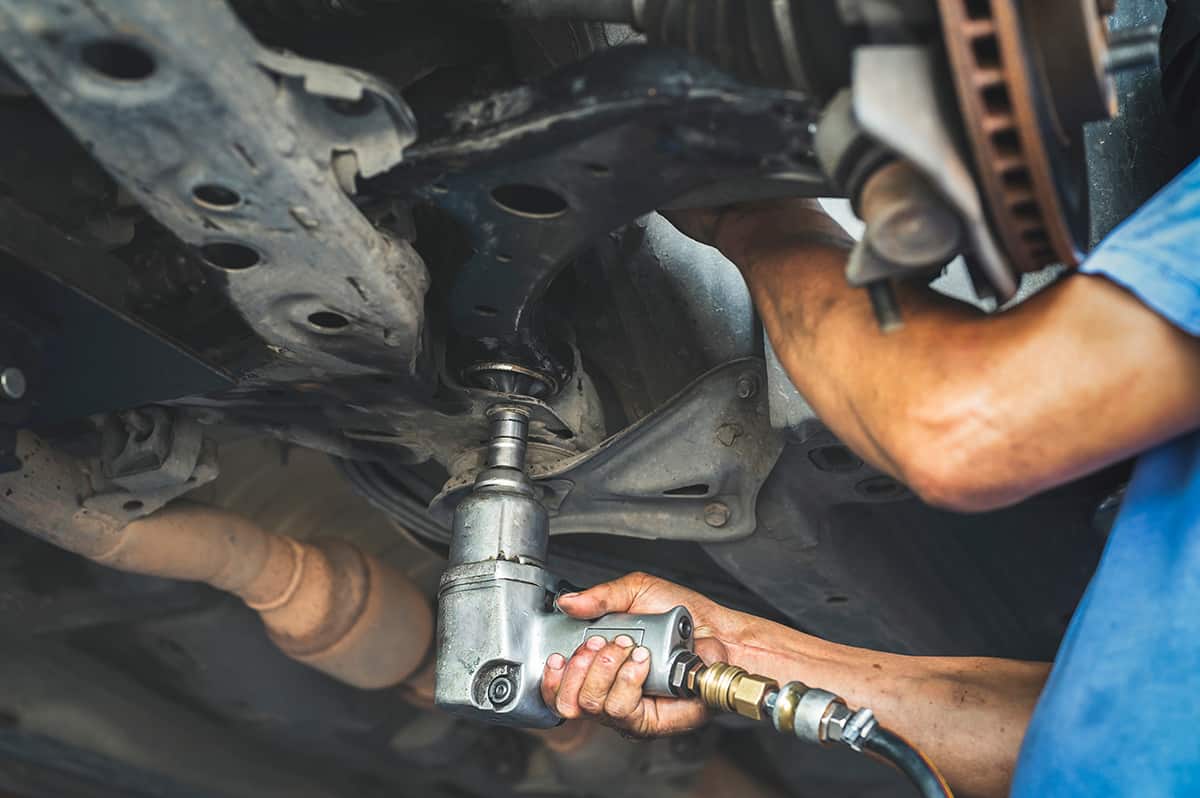
The cost of the bushings themselves is one of the primary factors in the overall cost. Bushings are generally affordable, with prices ranging from around $10 to $100 per bushing, depending on the type, material, and make and model of your vehicle. High-performance or specialty bushings may cost more.
While costs can vary greatly, a rough estimate for the total cost of replacing suspension bushings could range from around $200 to $500 per bushing for parts and labor. Remember, your vehicle may require multiple bushings replaced at once, which would increase the total cost.
